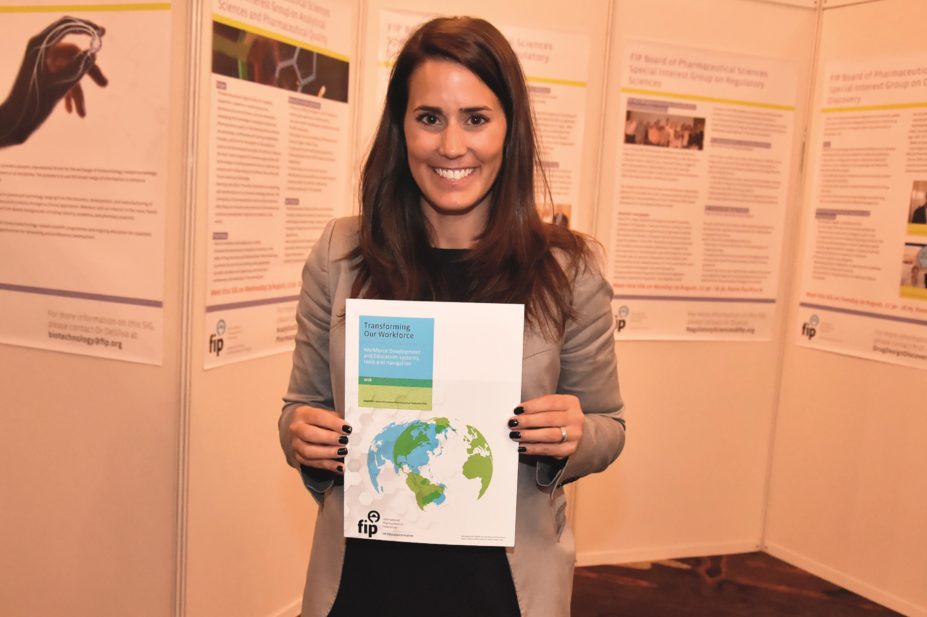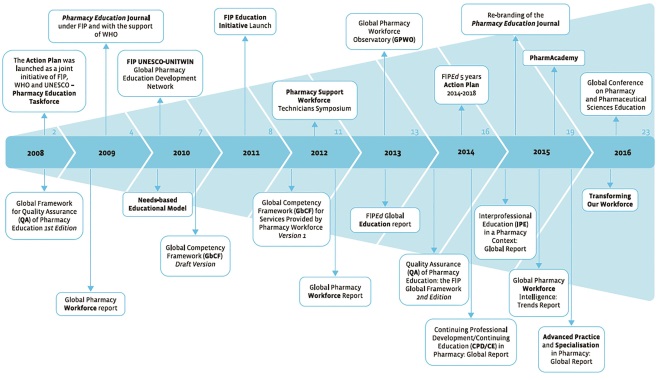
Courtesy of FIP
From 28 August to 1 September 2016, the 76th International Pharmaceutical Federation (FIP) World Congress of Pharmacy and Pharmaceutical Sciences was held in Buenos Aires, Argentina. During the conference, the FIP Education Initiative (FIPEd) development team launched the 2016 ‘Transforming Our Workforce’ report, bringing together its work on pharmacy education from the past decade.
Ian Bates, director of the FIPEd development team, introduced the report at the event, highlighting workforce development, workforce planning and workforce intelligence as the key issues for global healthcare reform. He told delegates that the World Health Organization (WHO) has made it clear that there is no possibility of transforming healthcare delivery without a corresponding capable and competent workforce.
FIP has been developing a comprehensive education and workforce development strategy since the formation of the Pharmacy Education Taskforce in 2008 and has published a series of global reports on subjects ranging from workforce intelligence and capacity building, to quality assurance frameworks and continuing professional development.
Bates went on to explain that the FIP team has developed a number of tools designed to support progressive and transformative workforce development.
Bates described ‘Transforming Our Workforce’ as an enabling document, designed to have longevity. It describes evidence-based and tested tools and mechanisms whereby leadership bodies and policymakers can gain traction for advancing the pharmacy workforce. It contains a series of case studies demonstrating how countries have used some or all of these tools to innovate and transform workforce capability to meet their increasing healthcare demands.
Also speaking at the event, Andreia Bruno, FIPEd project coordinator and researcher, and Kirstie Galbraith, FIPEd education lead for advanced practice, explained to delegates that the report describes the drivers behind the development of each tool as well as a series of global and national impact case studies associated with the ‘toolbox’.
A timeline of FIP Education resources and tools that were developed from 2008–2016 provides an overview of what has been achieved so far (see Figure 1).

Figure 1: Timeline of FIP Education resources and tools that were developed from 2008-2016
Source: Transforming Our Workforce / FIPED
The timeline provides an overview of what has been achieved by the FIPEd team so far, from 2008 to the release of the ‘Transforming Our Workforce’ report in 2016
The report presents a series of 14 country case studies and 28 global references to FIPEd tools and platforms are highlighted. Representing all six global regions of the WHO, the quality assurance and global competency frameworks have been the most widely used, and together form half of the references.
Bruno explained to the conference how health sciences faculties in the Republic of Serbia worked together on the reinforcement of a framework for experiential education, on the introduction of interprofessional teaching and learning activities, and a teaching competencies development programme. They used four of the tools: the global competency framework; the quality assurance framework; the global education report on academic and institutional capacity; and the interprofessional education report.
Galbraith gave the example of pharmacists in Thailand, who are involved in every aspect of the pharmaceutical supply chain, from manufacturing through to patient care. She explained that there are several existing tools and support mechanisms from the Thai professional regulatory body, educational institutions and pharmacy organisations that help support Thai pharmacists in their professional development.
In fact, several standards and guidelines recommended by FIP, the WHO and FIPEd — including the workforce intelligence report, the global competency framework and the quality assurance framework — have been adopted in Thai pharmacy practice and pharmacy education. According to Galbraith, the standards are used to improve and update pharmacy practitioners’ competencies to match global competencies and to serve the various local healthcare requirements in Thai society.
‘Transforming Our Workforce’ contains detailed, evidence-based descriptions of innovation, data and analysis of workforce development tools that have been used by various countries to assist with transforming pharmacy education and creating a flexible and adaptable pharmacy workforce that can meet the significant challenges of healthcare provision.
